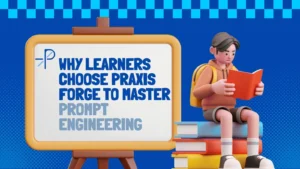
Why Learners Choose Praxis Forge to Master Prompt Engineering
Why Learners Choose Praxis Forge to Master Prompt Engineering Introduction Prompt Engineering has become one of the most in-demand AI
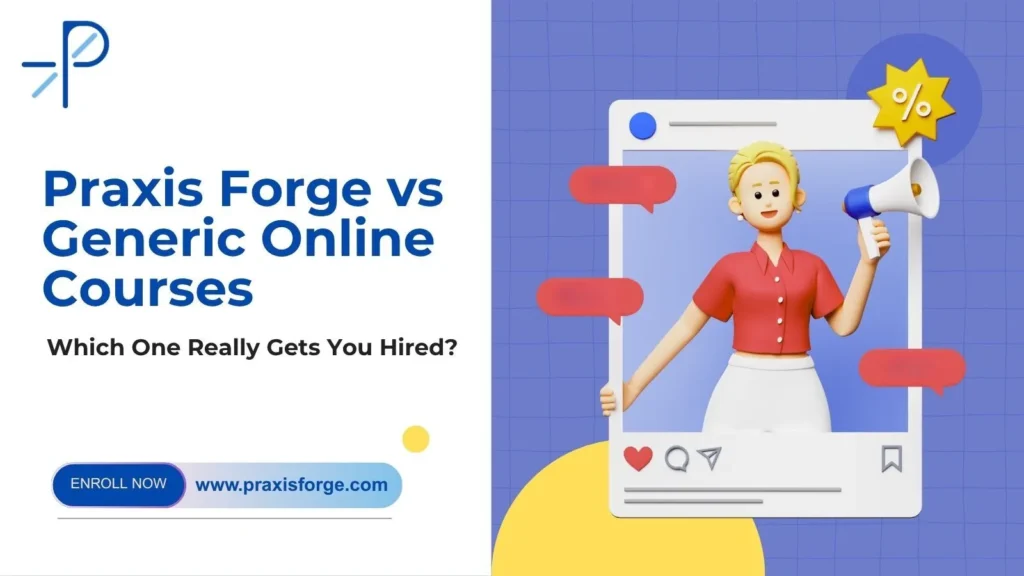
Table of Contents
What Is Prompt Engineering and Why It Matters
Prompt engineering is quickly becoming one of the most in-demand AI skills of the decade. It’s the art and science of designing inputs (prompts) that guide large language models like GPT or Claude to produce accurate, creative, and useful outputs.
While many people see prompt engineering as “just typing better questions,” professionals know it’s a core part of AI system design. It requires logic, creativity, and technical awareness of how AI models interpret human language.
According to Forbes, by 2026, over 60% of AI-powered businesses will require professionals with at least intermediate prompt engineering skills.
Explore our AI & Prompt Engineering Programs at Praxis Forge.
The Common Problem with Generic AI Courses
Most online platforms that claim to teach “AI” or “ChatGPT mastery” make two big mistakes:
Learners finish with theoretical knowledge but lack the ability to apply AI in real business or development environments.
Praxis Forge was built to change that.
How Praxis Forge Redefines Prompt Engineering Education
At Praxis Forge, prompt engineering isn’t just a course — it’s a skill-building journey designed around problem-solving and industry practice.
Here’s what makes it different:
External Ref: Stanford HAI emphasizes interdisciplinary understanding as key to prompt mastery. Praxis Forge brings this research directly into its pedagogy.
Real-World Learning Through Praxis Projects
One of the biggest reasons learners fail to retain AI skills is the lack of hands-on exposure.
That’s why Praxis Forge’s Prompt Engineering Track includes:
Check out Praxis Forge’s project-driven programs here: Courses & Learning Paths.
Expert Mentorship and Hands-On AI Labs
Unlike pre-recorded MOOCs, Praxis Forge emphasizes live mentorship and continuous evaluation.
Our mentors are active AI engineers, prompt designers, and product strategists working in the field. They teach what they use — not just what’s trending.
Students also gain access to the AI Sandbox, an internal environment to test and refine prompts with real-time model feedback.
This mentorship-driven design ensures every learner can transition from novice to professional with confidence.
How Praxis Forge Prepares You for the Future of AI Careers
AI roles are evolving — and so are the skills employers seek. Prompt engineering is no longer a niche — it’s part of every AI product, automation, and marketing system.
Praxis Forge’s students graduate with:
External Reference: McKinsey’s 2025 AI Talent Report projects a 3x demand increase for prompt engineers and LLM strategists. Praxis Forge programs directly align with that demand.
FAQs
Q1. Is prompt engineering only for developers?
Not at all. It’s for anyone who wants to use AI more effectively — marketers, designers, content creators, and engineers alike.
Q2. How long does it take to learn prompt engineering at Praxis Forge?
Most students gain job-ready proficiency in 6–8 weeks, depending on their learning pace.
Q3. Do I need coding experience to start?
No. Praxis Forge’s course starts from fundamentals and builds toward advanced applications.
Q4. What tools will I learn?
You’ll work with multiple models like OpenAI GPT, Claude, and Gemini, along with visualization and automation tools.
Q5. Does Praxis Forge provide certification?
Yes, upon completion, learners receive an industry-recognized certificate to boost employability.
Conclusion
Prompt engineering isn’t just about writing better inputs — it’s about communicating with intelligence. At Praxis Forge, we turn that communication into a professional advantage.
We combine AI expertise, mentorship, and hands-on learning to ensure you don’t just learn — you build, test, and lead.
If you’re ready to join the next generation of AI professionals, it’s time to learn prompt engineering the Praxis Forge way.
Start learning today: Enrol at Praxis Forge.

Why Learners Choose Praxis Forge to Master Prompt Engineering Introduction Prompt Engineering has become one of the most in-demand AI
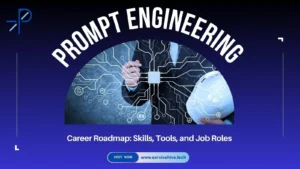
Prompt Engineering Career Roadmap: Skills Tools and Job Roles Table of Contents Introduction What Is Prompt Engineering? Why Prompt Engineering
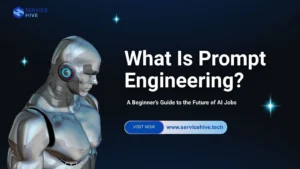
What Is Prompt Engineering? A Beginner’s Guide to the Future of AI Jobs Artificial Intelligence (AI) is transforming the way
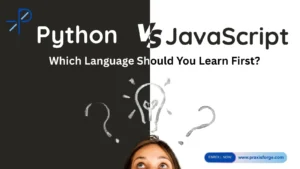
Python vs JavaScript: Which Language Should You Learn First? Introduction Choosing your first programming language can shape your entire tech
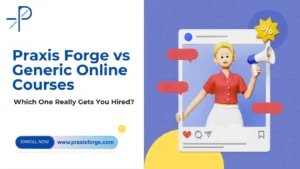
How Praxis Forge Teaches Prompt Engineering Differently from Other Platforms Table of Contents What Is Prompt Engineering and Why It
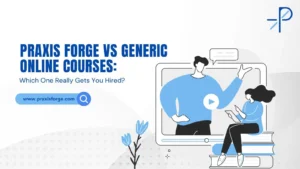
Praxis Forge vs Generic Online Courses: Which One Really Gets You Hired? Table of Contents The Problem with Generic Online